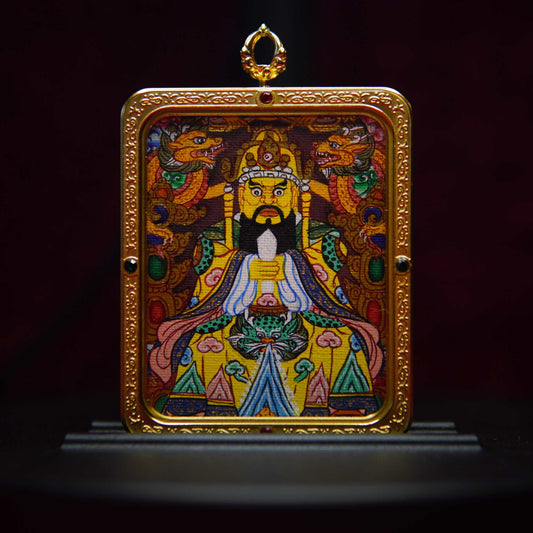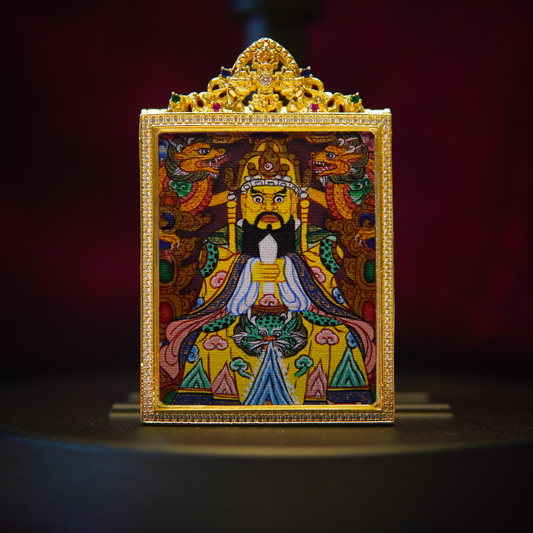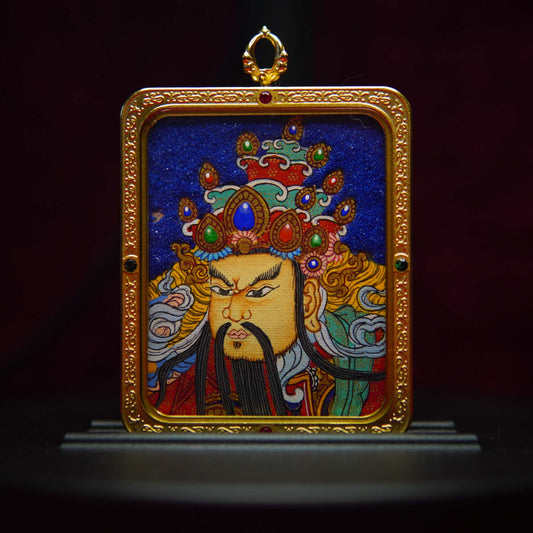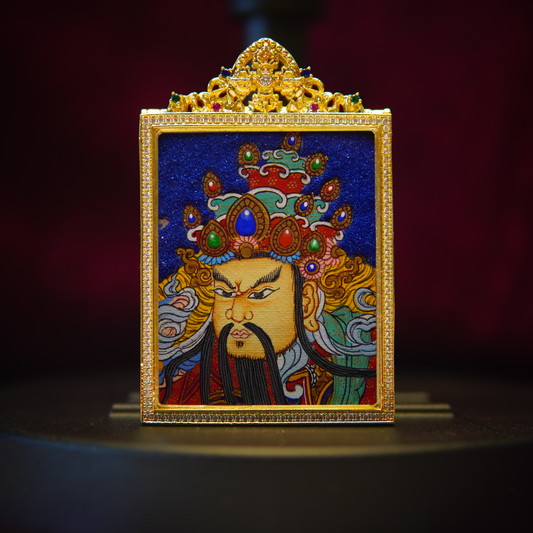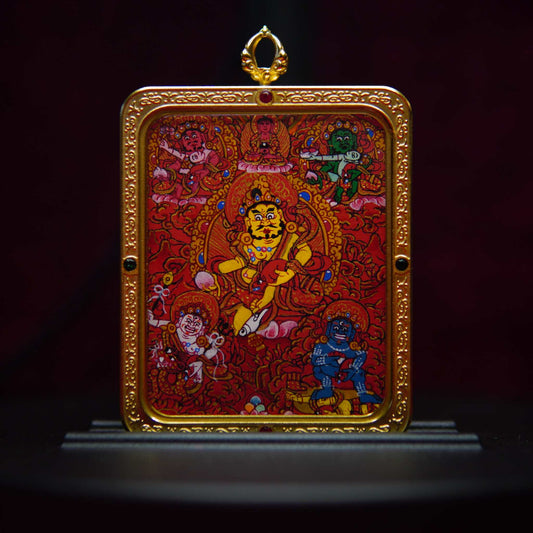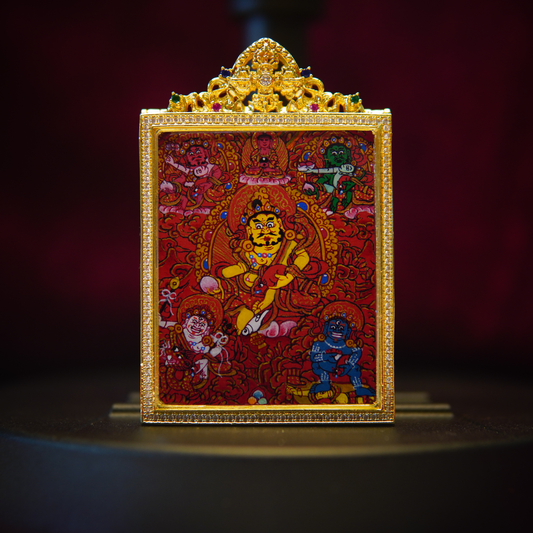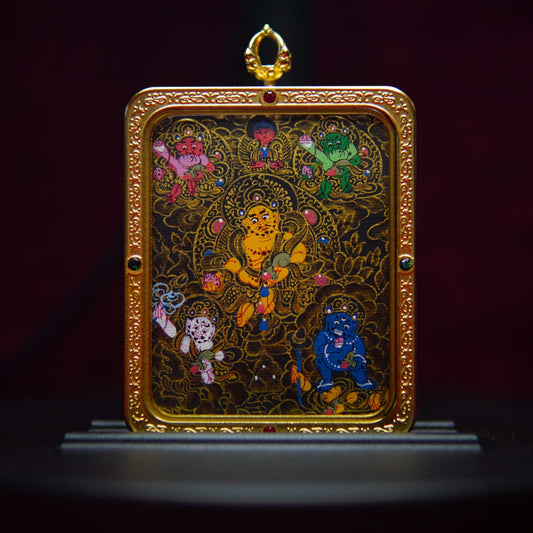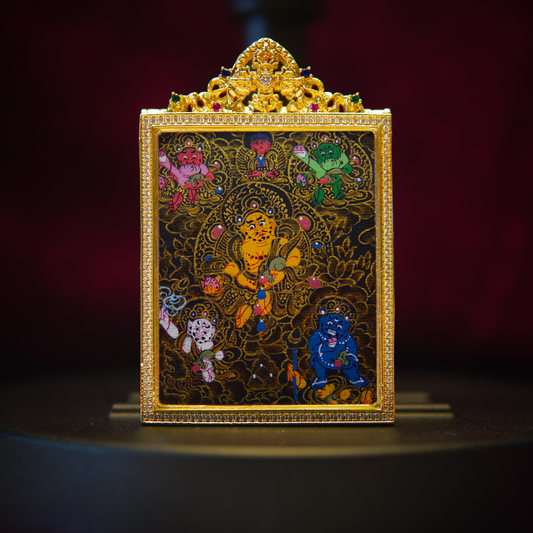Buddhist Ganesha (Ganapati): The Remover of Obstacles in Dharma Practice
Tapita- Buddhist Ganesha (Ganapati): The Remover of Obstacles in Dharma Practice
- Ganesha in Buddhist History and Tantric Traditions
- Names and Forms: Ganapati, Maha Rakta, Vinayaka
- Buddhist Symbolism of Ganesha
- Ganapati Practices in Tibetan Buddhism
- Buddhist Ganesha vs. Hindu Ganesha: What’s the Difference?
- Why Buddhist Ganesha Matters Today
- Conclusion: Ganapati, Guardian of the Inner Path
In the popular imagination, Ganesha—also known as Ganapati—is often recognized as the elephant-headed Hindu god of success and wisdom. But in Vajrayana Buddhism, especially within the Tibetan and Nepalese traditions, Ganesha also holds a significant place. Known as the Buddhist Ganesha or Ganapati, this deity is venerated not just for material abundance, but as a powerful spiritual guardian who removes obstacles on the path to enlightenment.
Ganesha in Buddhist History and Tantric Traditions
Buddhism and Hinduism have historically shared symbolic and ritual elements, especially in regions like India and Nepal. In these cultures, Ganesha was adopted into certain tantric Buddhist lineages, where he appears as a dharmapala (protector of the Dharma) and wealth-bestowing deity.
In Buddhist texts, Ganesha is sometimes described as a deity who was subjugated and then empowered by the Buddha or tantric masters. His transformation from a worldly god of material fortune into a protector of spiritual treasure mirrors the Buddhist path itself—where worldly attachments are not denied, but transformed through wisdom.
Names and Forms: Ganapati, Maha Rakta, Vinayaka
Within Buddhist contexts, Ganesha appears under various names:
-
Ganapati: The most common name, meaning "Lord of Hosts".
-
Vinayaka: A name used in both Hindu and Buddhist references, sometimes referring to Ganesha in a more wrathful or obstructive aspect.
-
Maha Rakta Ganapati: A red-colored form of Ganesha in Tibetan Buddhism, associated with tantric wealth rituals and obstacle removal.
In Vajrayana iconography, Ganapati is often shown with multiple arms, holding traditional implements such as:
-
A bowl of sweets (symbolizing abundance)
-
A noose (to capture negativity)
-
An axe or goad (to cut through delusion)
-
Sometimes dancing atop a rat (symbolizing the overcoming of greed)
Buddhist Symbolism of Ganesha
While Ganesha is known for removing obstacles, his Buddhist symbolism is more nuanced:
-
Elephant Head: Symbolizes wisdom, memory, and strength—qualities essential for Dharma practice.
-
Large Ears: Suggest deep listening and receptivity to teachings.
-
Small Eyes and Mouth: Represent focus and disciplined speech.
-
Large Belly: The capacity to digest all experiences, good or bad.
-
Broken Tusk: Signifies sacrifice and non-attachment—he broke it to write sacred texts.
In Buddhist teachings, Ganesha does not represent worldly indulgence, but skillful means (upaya)—using whatever tools are available to help sentient beings along the spiritual path.
Ganapati Practices in Tibetan Buddhism
In Tibetan Buddhism, Ganapati is invoked in certain treasure lineages (termas) and wealth practices. These rituals are not focused on personal gain, but on supporting the conditions needed for Dharma to flourish—such as health, resources, and the removal of spiritual or emotional blocks.
Common practices include:
-
Chanting Ganapati mantras
-
Visualizations of Maha Rakta Ganapati
-
Ritual offerings of sweets, incense, and butter lamps
He is sometimes placed on altars alongside deities like Dzambhala (Buddhist god of wealth), Padmasambhava (Guru Rinpoche), and White Tara, showing his supportive role in balanced spiritual development.

Buddhist Ganesha vs. Hindu Ganesha: What’s the Difference?
While both forms share iconographic features, their underlying philosophies differ:
-
Hindu Ganesha is often approached for success in worldly matters—new ventures, exams, relationships.
-
Buddhist Ganapati is viewed through the lens of transformation—turning obstacles into insight and using material conditions as support for spiritual awakening.
The Buddhist Ganesha is often more wrathful, red-colored, and dynamic, reflecting tantric principles of energy transformation.
Why Buddhist Ganesha Matters Today
In today’s world, many people face obstacles—not just external, but emotional, mental, and spiritual. The image of Buddhist Ganapati reminds us that we can:
-
Transform our challenges into wisdom
-
Harness abundance for compassionate aims
-
Rely on ancient symbols to fuel inner growth
For spiritual seekers, Ganapati stands as a bridge between earthly well-being and spiritual mastery.
Conclusion: Ganapati, Guardian of the Inner Path
The Buddhist Ganesha is not merely a god of good luck. He is a protector of awakening, a reminder that the same energies which bind us can also liberate us—when met with wisdom.
Whether depicted in a thangka, a pendant, or a meditation, Ganapati’s elephant face looks directly into the heart of the practitioner and says: "Clear the path. Go forward. And don’t forget to smile."

